
Types of Pastry Bags and Tips
Commonly used for decorating cakes, cupcakes, and other baked goods, pastry bags and tips are versatile tools that can be used for many different tasks in the kitchen. For example, you can use pastry bags for piping mashed potatoes, meringue, dough, and much more. In this guide we'll go through the different types of pastry bags and piping tips and what each is used for to help you find the perfect options for your bakery or catering business.
Essential Pastry Bag Parts and Accessories
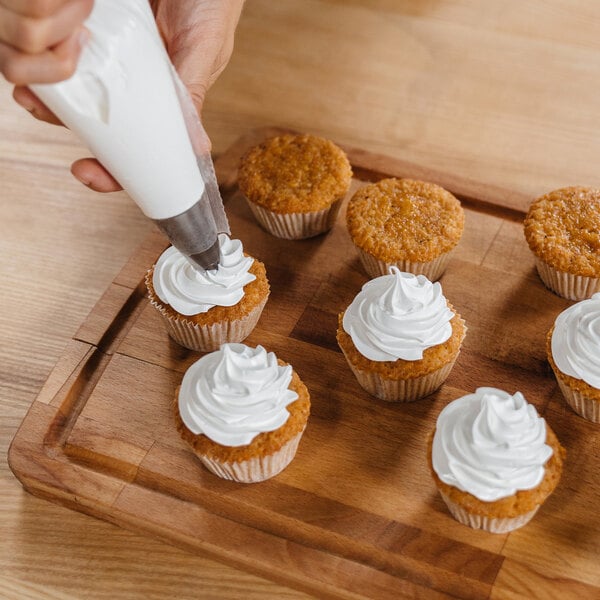
A nozzle that attaches to the end of the pastry bag

Holds and dispenses the food that you’re piping
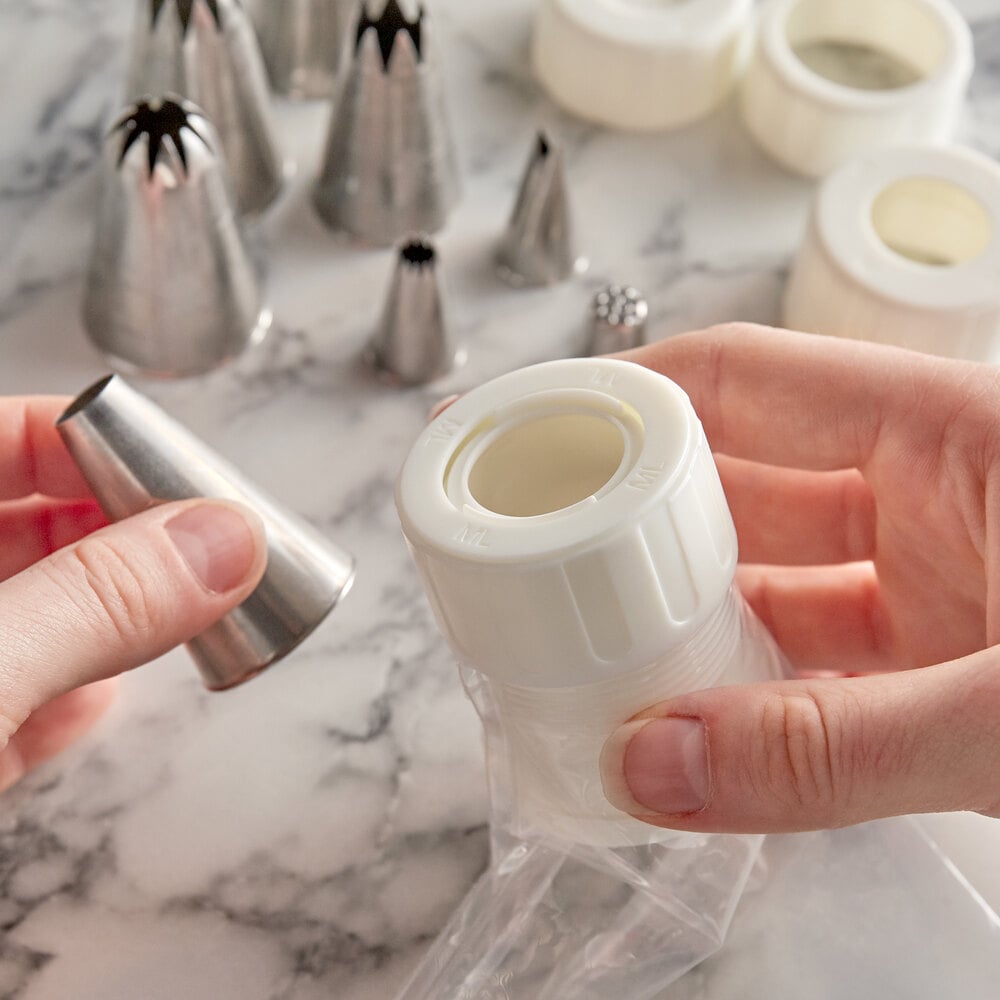
Holds the piping tip onto the end of your pastry bag
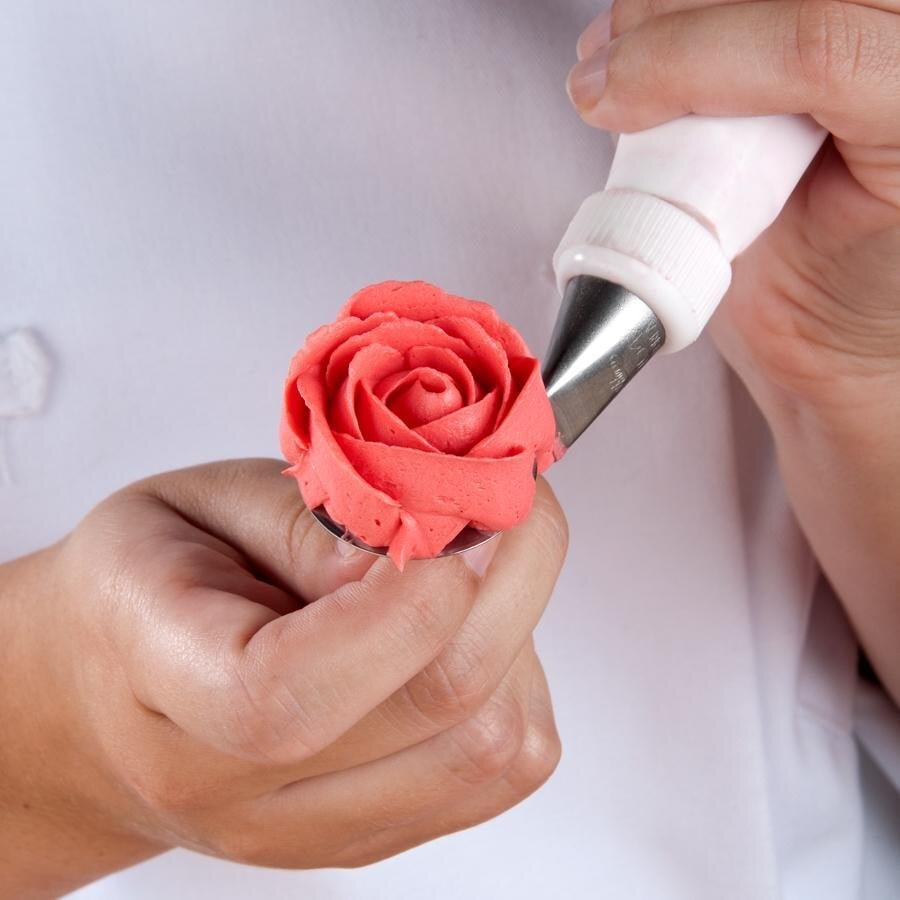
A metal, nail-shaped tool that is used for piping roses and other flowers
Types of Disposable Pastry Bags
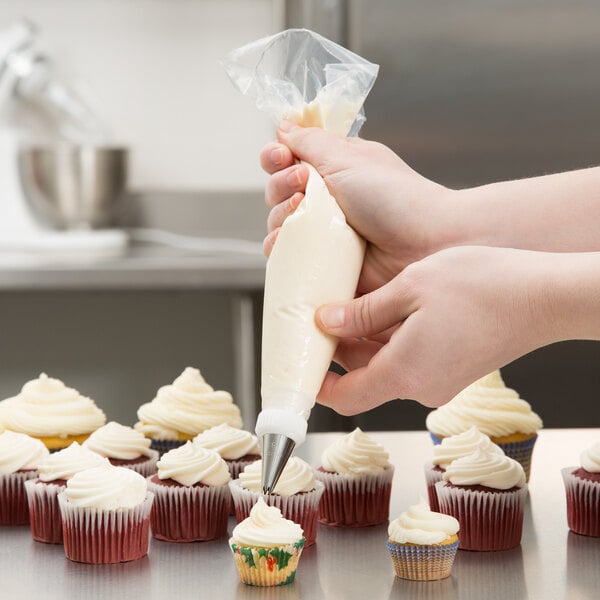

High Grip/Tacky Disposable Bags on a Roll
- Offers the best grip
- Easy dispensing and storage in roll form
- Perforated to make equal-sided triangles
- Microwave safe
- No hanging loops or reinforced tips
- Expensive over time
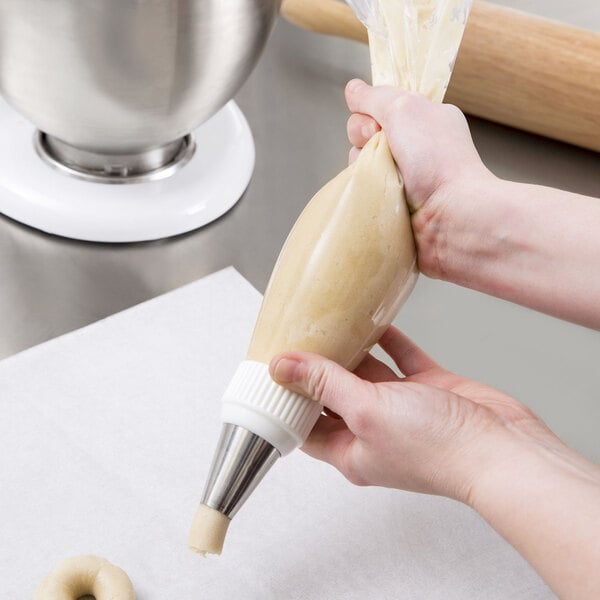

Soft Disposable Bags
- Very pliable plastic
- Thicker than other disposable options
- Cut to fit any size tip
- Microwave safe
- No hanging loops or reinforced tips
- Expensive over time


Striping Bag Inserts
- Pipe multiple colors at once through one tube
- Wider for easier filling
- Microwavable
- No hanging loops or reinforced tips
- Expensive over time
Types of Reusable Pastry Bags
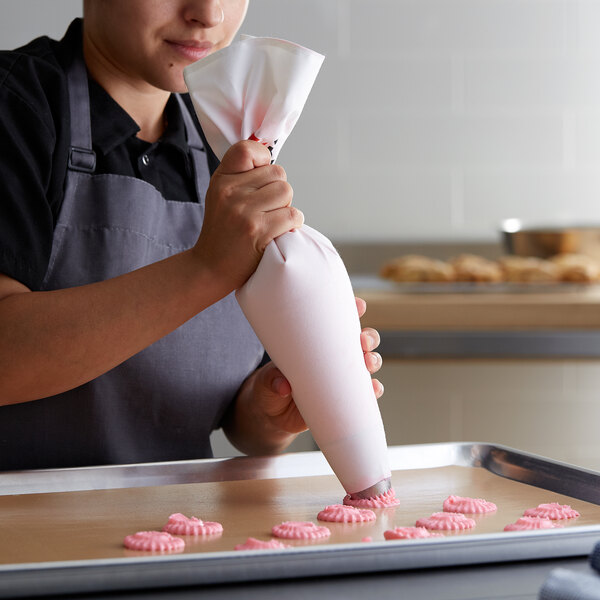

Plastic-Coated Canvas
- Great for heavy- and light-duty use
- Economically priced
- Easier to clean than traditional canvas pastry bags
- Great for piping all types of food
- Can trim tip
- Winco brand is microwave safe
- Can be slippery
- Thinner material is not ideal for hot foods
- Ateco brand is not microwave safe
- Hand wash only
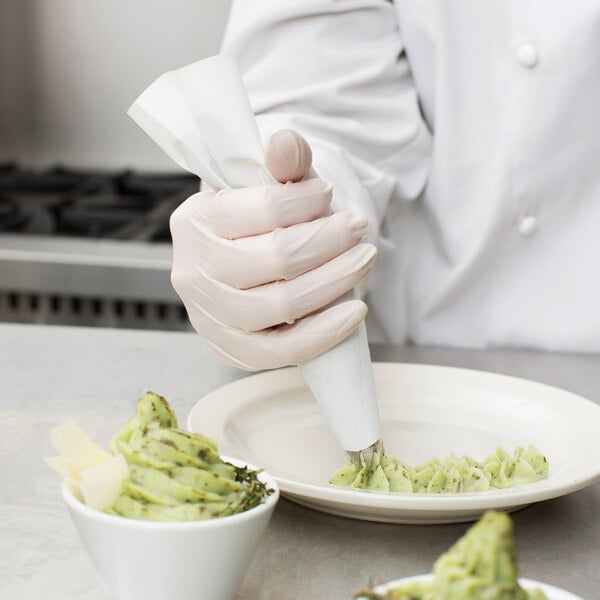

Polyester (Polyurethane-Lined)
- Versatile, all-purpose
- Strong and pliable for heavy-duty use
- Easy to clean
- Leakproof
- Microwave safe
- Can be slippery
- Hand wash only


Thermoplastic Polyurethane
- Flexible like silicone but doesn't stretch or balloon
- Versatile, all-purpose
- Thicker material makes it better for hot applications
- Stain- and odor-resistant
- Hanging loop for drying or storage
- Microwave safe
- Tips are not reinforced
- Hand wash only


Canvas
- Best for piping thicker foods like dough, thick frosting, mashed potatoes, and other non-greasy foods
- Thick material makes it great for hot foods
- Great grip and very durable
- Fatty / oily foods may leak through
- Harder to clean than other reusable options
- Can accumulate stains
- Cannot trim the tip
- Not microwave safe
- Hand wash only
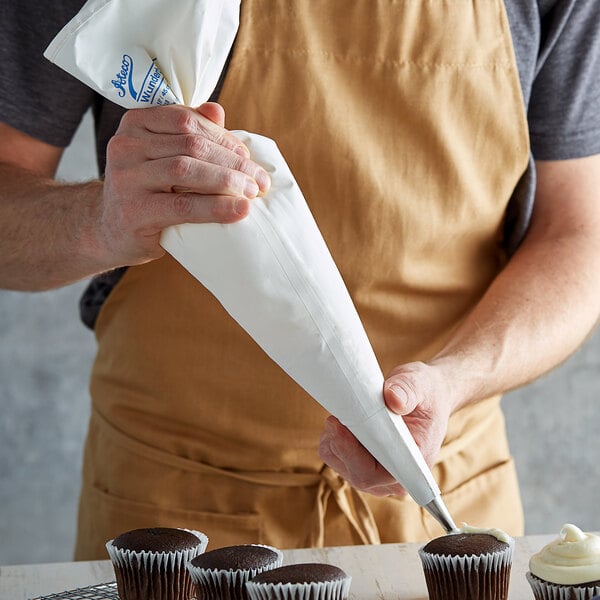

Polyurethane-Lined Cotton
- Heavy-duty for extended use
- For the professional baker and pastry chef
- Easier to clean than canvas bags
- Thick, heavyweight coated cotton is great for hot foods and prevents contents in bag from seeping through
- Double reinforced tip and hemmed top with hanging loop
- Microwave safe
- Pricier than other reusable options
- Hand wash only


Nylon
- Great for piping thick foods like dough, mashed potatoes, and other non-greasy foods
- Extra flexible construction and durability
- Microwave safe
- Fatty / oily foods may leak through
- Hand wash only
Types of Piping Tips
Having the right decorating tips is essential for any type of bakery, grocery store, or catering company because it gives you options when decorating baked goods. Piping tips come either individually or in sets, so you can order exactly the tip you need or a kit for getting started with decorating.
Piping bag tips are made of durable materials like stainless steel or nickel-plated steel to make them long lasting. But, they need to be hand washed and dried immediately after to prevent rust from forming. Additionally, you should never wash your decorating tips in the dishwasher.
Piping tips are also classified into different families based on the size and shape of their openings, and different families are used for different purposes. Below we list some common piping tip types and what they're used for.
Piping Tip Type | Most Common Uses |
|---|---|
Outlining details, writing, adding dots, filling in flower centers, and completing complicated lattice and lace work | |
Making plain, ruffled, or stand-up leaves | |
Making one-squeeze flowers (the number of cuts on the tip determines the number of petals on the flower) | |
Making roses, ruffled flowers, cake borders, and more | |
Designing flower petals, curved decorations, and borders | |
Adding grass to cakes | |
Creating ribbons, ruffles, swags, bows, scallops, and edges | |
Adding basketweave and lattice lines | |
Adding shells, stars, rosettes, and flowers to baked goods | |
Creating shells, stars, flowers, and scalloped designs, as well as adding frosting on top of cupcakes | |
Frosting cupcakes and designing stars, fleurs-de-lis, and flowers | |
Producing borders and outlines | |
Creating St. Honore cakes | |
Adding delicate and intricate flowers to cakes and cupcakes | |
Quickly icing the sides of cakes | |
Filling donuts, cream puffs, and other pastries |
Pastry Tip Sizes and Shapes
Decorating tips are assigned different numbers based on the shape and size of their openings. Below is a graphic that shows some of the most common pastry tip numbers and what the result of using them is.

Types of Couplers and Tip Compatibility
Make your piping process more efficient with couplers. These tools allow you to quickly switch between tip styles without having to change bags and refill your icing or pastry dough. With an array of sizes available, you can be sure to find a coupler that fits the bag and tip you need to use.
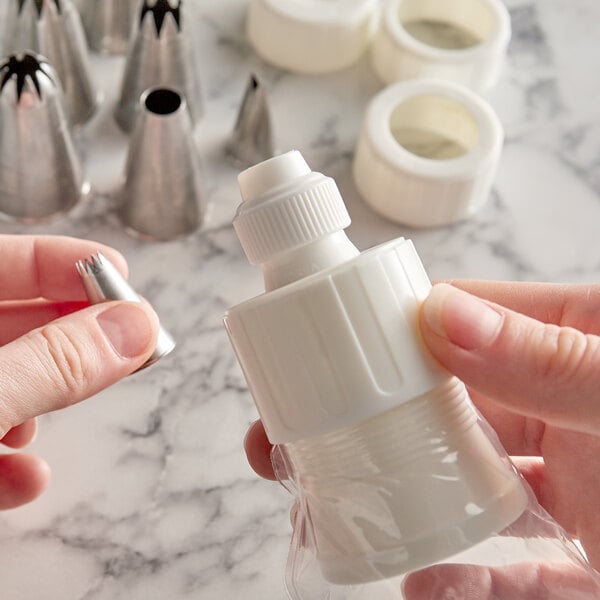
- Allows you to interchange any small, medium, or large-sized piping tips
- Works best with pastry tips that have a bottom diameter of 1/2" to 1 1/2"
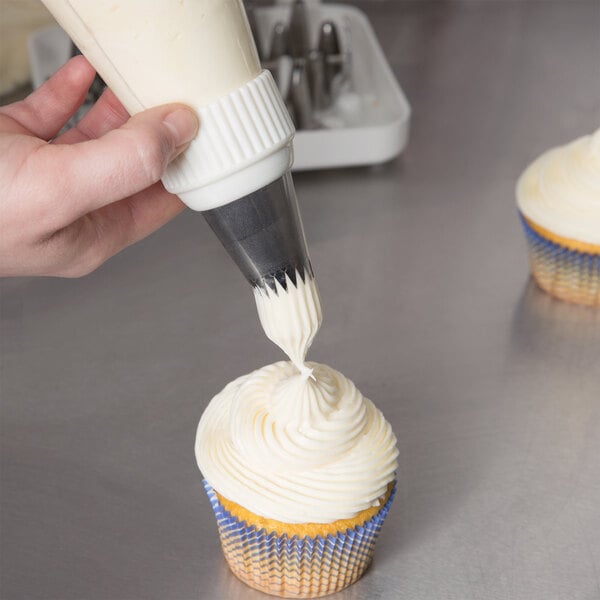
- Allows you to interchange large-sized piping tips
- Works best with large-sized piping tips that have more than a 3/4" bottom diameter
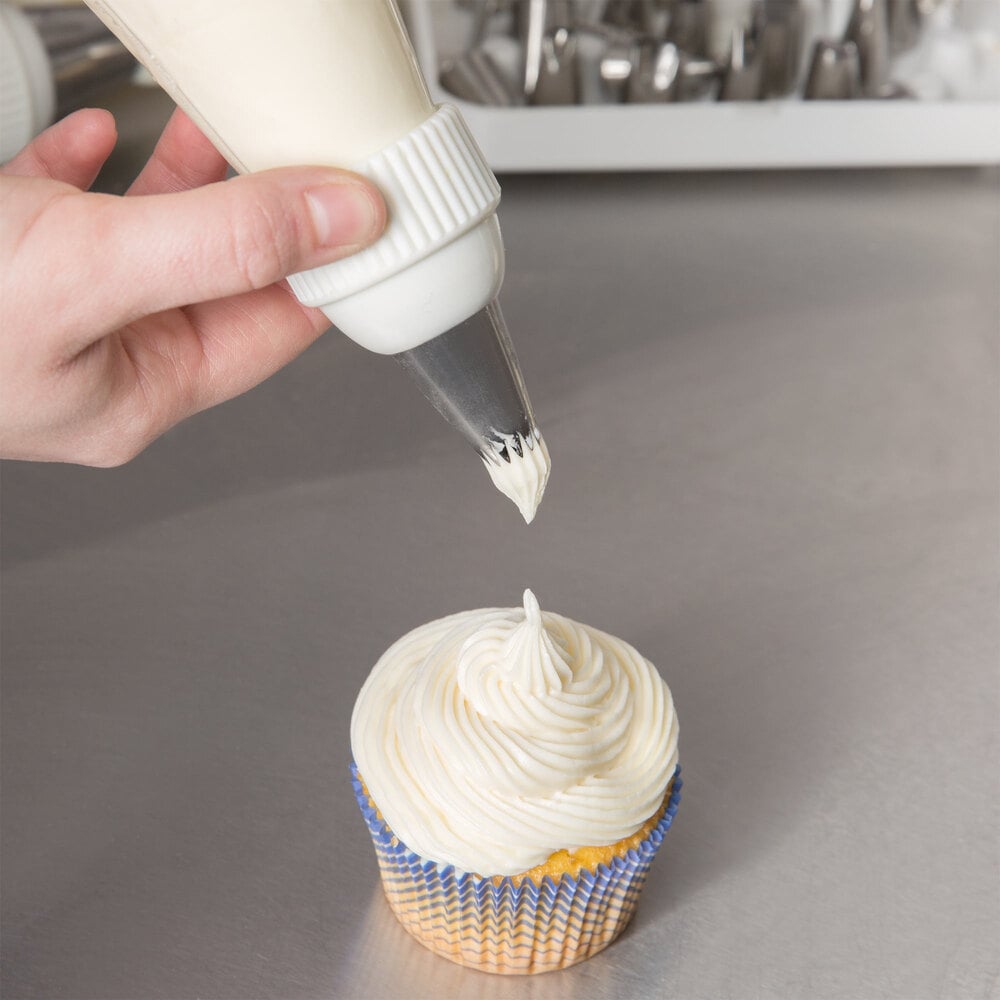
- Allows you to interchange medium-sized piping tips
- Works best with piping tips that have a 3/4" bottom diameter

- Allows you to interchange small/standard-sized piping tips
- Works best with piping tips that have an 11/16" bottom diameter
Cake Decorating Bags and Piping Tips FAQs
Whether you're a master cake decorator or culinary student, you may run into some issues when using cake decorating products. We compiled some common questions cake decorators have about using pastry bags and piping tips and answered them so you can easily find the solution to your problem.
How to Hold a Pastry Bag
To hold a pastry bag properly, grip the bag with your dominant hand a few inches behind the coupler firmly. Holding the bag this close to the tip gives you excellent control, which is ideal when doing detailed decorating work. Then, with your non-dominant hand, hold the bag up and keep it closed and out of the way.
How to Clean Pastry Bags
To wash dishwasher-safe bags, simply turn them inside out and attach them to your dishwasher rack with a clothespin.
To clean non-dishwasher-safe bags, turn the bags inside out and wash them by hand with hot, soapy water. Then, rinse the bags thoroughly. Once clean, stuff the bag loosely with paper towels and allow it to stand up on the counter until it dries completely.
How to Fill Pastry Bags by Yourself
It can be difficult to hold your piping bag and fill it with product at the same time. To keep the bag stable, insert the bag into a tall glass with the tip facing down and fold the sides over the edge of the glass. Then, you can proceed to fill your pastry bag with ease.
How to Use Multiple Colors of Icing When Decorating
A frosting plug is a great way to use multiple colors of icing with only one pastry bag. Here are the steps you need to follow to use a frosting plug:
- Take a sheet of plastic wrap and lay it flat on your counter.
- Add some frosting and then wrap the plastic around it.
- Spread the frosting evenly throughout the plastic wrap and then twist both ends to form a sausage shape.
- Insert a coupler into your pastry bag and feed the plug into the bag until the end of the plastic wrap comes out of the coupler.
- Cut off the end of the plastic wrap, add your piping tip, and screw on the ring.
- Repeat this process for all of the colors and types of icing you have.
- Then you can simply remove the plastic wrap when changing colors and wash out the coupler and tip.
Related Resources
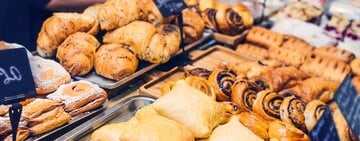
How to Write a Bakery Business Plan
Starting your own bakery is no easy task . Many people have tried and failed to get their business ideas off the ground, or worse, their business flopped within the first year. So what sets a successful bakery apart from the ones that don't make it? A solid bakery business plan that can help you stay organized and obtain the funding you need. We'll talk you through every major part of a business plan, from creating a basic description of your establishment to offering financial projections to future investors. Why is a Bakery Business Plan Necessary? A bakery business plan can be used to garner interest from potential investors or loans from a bank. Additionally, it is helpful to you as an owner. Creating a bakery business plan allows you t
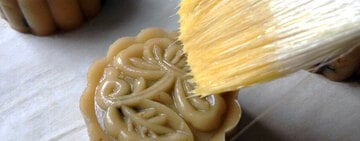
Different Types of Pastry Brushes
Are you looking for the best basting brush or pastry brush to keep your meat tender and flavorful or baked crusts golden on top? A pastry brush, also known as a basting brush, is a versatile tool that is a must-have for any kitchen. Consider the different types available and your intended application to find a brush that allows you to unlock the full flavor of your signature recipes. Shop All Pastry Brushes
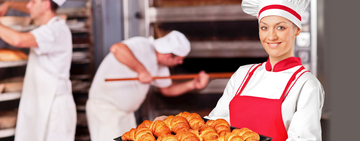
Choosing the Best Commercial Bakery Equipment
Finding the right mix of bakery equipment to outfit your new bakery can seem like a daunting task. It's important to think about not only what you wish to produce, but how much, as those details will influence the specific pieces of equipment you should purchase. Whether you're looking to open a new business , expand your existing one, or simply replace some obsolete or aging pieces, you'll want to purchase the right equipment and get the most for your money. Below, we've provided a list of tips and suggestions to help you get the best bakery equipment for your needs! Plus, we've even included a downloadable checklist for essential smallwares to use in your bakery. Download Checklist PDF Dough Preparation The first step in making bread or a
- Topics 1356
- Industrial 55
- Troubleshooting Guides 21
- Restaurant Management 128
- Bar Management 56
- Catering Tips 36
- Bakery Management 42
- Food Trucks & Concessions 49
- Advertising & Marketing 37
- Eco-Friendly Tips 11
- Facility Layout & Design 42
- Coffee Shop Tips 28
- Installation & Maintenance 51
- Janitorial & Pest Control 30
- Safety & Sanitation 88
- Startup Tips 104
- Menu Design 10
- Kitchen & Cooking Tips 83
- Hospitality Management 24
- Pizza & Sandwich Shop Tips 36
- Smallwares 37
- Food Prep 89
- Tabletop Items 17
- Disposables 22
- Calculators & Tools 6
- Consumables 52
- Warewashing & Laundry 19
- Cooking Equipment 91
- Food Storage & Refrigeration 51
- Beverage Equipment 35
- Office Supplies 6
- Resource Type
- In-Depth Articles272
- Buying Guides298
- How-Tos95
- Product Reviews78


